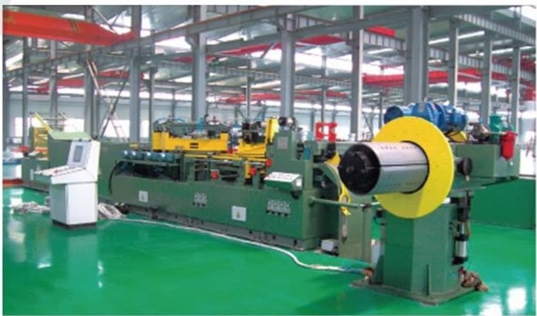Table of Contents
Comparing Dry Type and Liquid Filled Transformers
Transformers are essential components in electrical systems, as they help to regulate voltage Levels and ensure the efficient transmission of electricity. There are two main types of transformers commonly used in the industry: dry type and liquid filled transformers. Each type has its own set of advantages and disadvantages, making it important for engineers and designers to carefully consider which type is best suited for their specific application.

Dry type transformers, as the name suggests, do not use any liquid coolant for insulation. Instead, they rely on air or solid insulation materials to protect the windings and core. This makes them ideal for indoor applications where the use of liquid coolant may not be practical or safe. Dry type transformers are also more environmentally friendly, as they do not pose the risk of leaking oil or other hazardous substances.
On the other hand, liquid filled transformers use oil or other types of liquid coolant to insulate the windings and core. This type of transformer is typically used in outdoor applications or in locations where fire Safety is a concern. Liquid filled transformers are also more efficient at dissipating heat, making them suitable for high-power applications where heat generation is a significant factor.
When comparing dry type and liquid filled transformers, it is important to consider factors such as cost, efficiency, maintenance requirements, and environmental impact. Dry type transformers are generally more expensive to purchase upfront, but they require less maintenance over time compared to liquid filled transformers. On the other hand, liquid filled transformers may have lower initial costs, but they require regular monitoring and maintenance to ensure proper operation.
| model | Rated power (KVA) | Voltage combination(KV) | Off-load losses(W) | Load losses(W) | Off-load Current (%) | Short-circuit impedance (%) |
| SH15-M-30 | 30 | 6,6.3,10,10.5,11/0.4 | 33 | 630 | 1.50 | 4.0 |
| SH15-M-50 | 50 | 6,6.3,10,10.5,11/0.4 | 43 | 910 | 1.20 | 4.0 |
| SH15-M-63 | 63 | 6,6.3,10,10.5,11/0.4 | 50 | 1090 | 1.10 | 4.0 |
| SH15-M-80 | 80 | 6,6.3,10,10.5,11/0.4 | 60 | 1310 | 1.00 | 4.0 |
| SH15-M-100 | 100 | 6,6.3,10,10.5,11/0.4 | 75 | 1580 | 0.90 | 4.0 |
| SH15-M-125 | 125 | 6,6.3,10,10.5,11/0.4 | 85 | 1890 | 0.80 | 4.0 |
| SH15-M-160 | 160 | 6,6.3,10,10.5,11/0.4 | 100 | 2310 | 0.60 | 4.0 |
| SH15-M-200 | 200 | 6,6.3,10,10.5,11/0.4 | 120 | 2730 | 0.60 | 4.0 |
| SH15-M-250 | 250 | 6,6.3,10,10.5,11/0.4 | 140 | 3200 | 0.60 | 4.0 |
| SH15-M-315 | 315 | 6,6.3,10,10.5,11/0.4 | 170 | 3830 | 0.50 | 4.0 |
| SH15-M-400 | 400 | 6,6.3,10,10.5,11/0.4 | 200 | 4520 | 0.50 | 4.0 |
| SH15-M-500 | 500 | 6,6.3,10,10.5,11/0.4 | 240 | 5140 | 0.50 | 4.0 |
| SH15-M-630 | 630 | 6,6.3,10,10.5,11/0.4 | 320 | 6200 | 0.30 | 4.5 |
| SH15-M-800 | 800 | 6,6.3,10,10.5,11/0.4 | 380 | 7500 | 0.30 | 4.5 |
| SH15-M-1000 | 1000 | 6,6.3,10,10.5,11/0.4 | 450 | 10300 | 0.30 | 4.5 |
| SH15-M-1250 | 1250 | 6,6.3,10,10.5,11/0.4 | 530 | 12000 | 0.20 | 4.5 |
| SH15-M-1600 | 1600 | 6,6.3,10,10.5,11/0.4 | 630 | 14500 | 0.20 | 4.5 |
| SH15-M-2000 | 2000 | 6,6.3,10,10.5,11/0.4 | 750 | 18300 | 0.20 | 5.0 |
| SH15-M-2500 | 2500 | 6,6.3,10,10.5,11/0.4 | 900 | 21200 | 0.20 | 5.0 |
In terms of efficiency, both types of transformers have their own advantages. Dry type transformers are typically more energy efficient, as they do not have the added heat loss associated with liquid coolant. However, liquid filled transformers are better at dissipating heat, which can be beneficial in high-power applications where heat generation is a concern.
From a maintenance perspective, dry type transformers are generally easier to maintain, as they do not require regular monitoring of liquid coolant levels. However, liquid filled transformers may require more frequent inspections to ensure that the coolant is at the proper level and free of contaminants.
In terms of environmental impact, dry type transformers are considered to be more environmentally friendly, as they do not pose the risk of leaking oil or other hazardous substances. Liquid filled transformers, on the other hand, require proper disposal of the coolant to prevent environmental contamination.
In conclusion, both dry type and liquid filled transformers have their own set of advantages and disadvantages. When choosing between the two types, it is important to consider factors such as cost, efficiency, maintenance requirements, and environmental impact. Ultimately, the decision will depend on the specific requirements of the application and the preferences of the designer or engineer.
If you are interested in learning more about transformers, pole mounted transformers, or other related topics, be sure to check out our videos on our website. Our company in China specializes in manufacturing transformers that meet international standards such as IEC60076. Whether you are looking for information on dry type transformers, liquid filled transformers, or pole mounted transformers, our videos are a valuable resource for engineers, designers, and anyone else interested in learning more about these essential electrical components.

